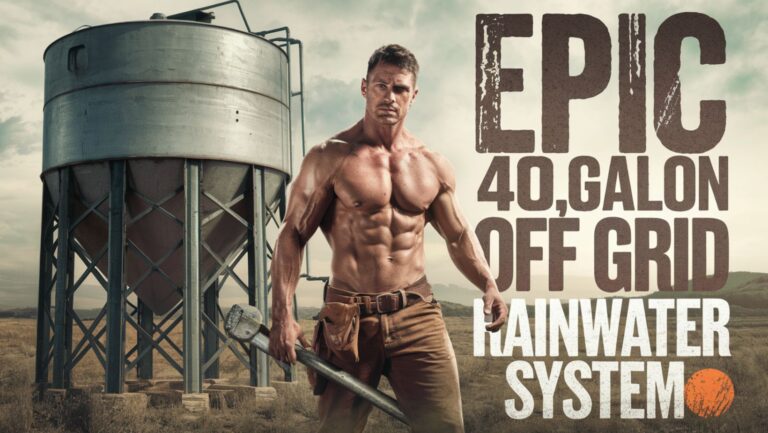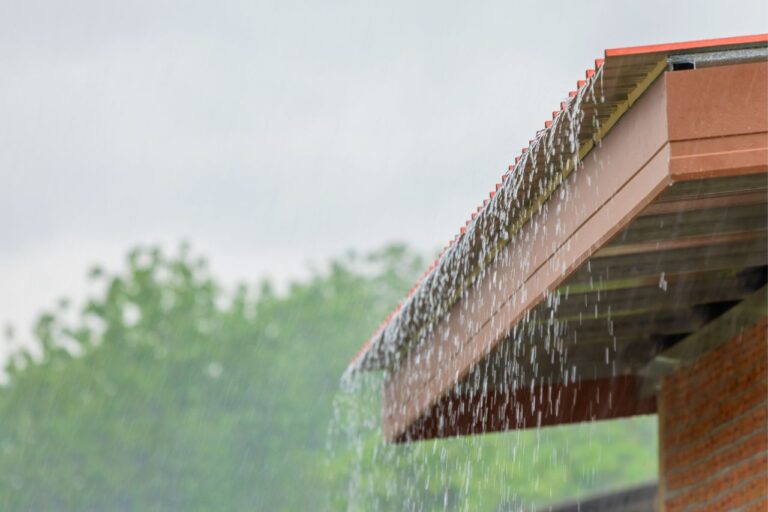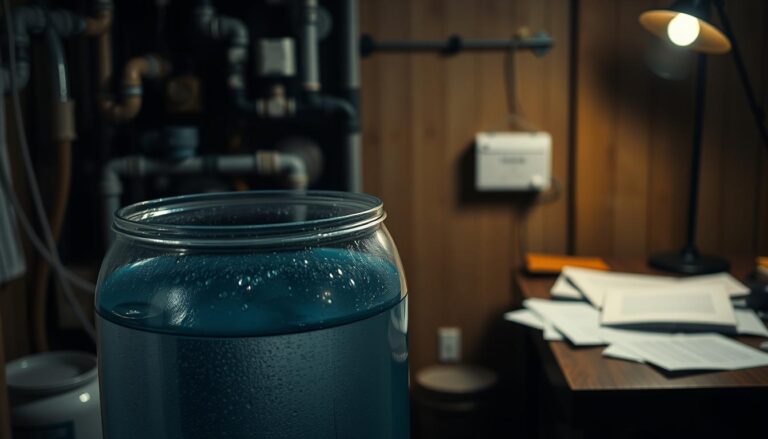10 Simple and Creative Ways to Collect Water at Home
Water is one of our most precious resources, yet many regions face severe scarcity. From drought-stricken areas like Kenya to urban centers in the U.S., the need for sustainable solutions is urgent. Rainwater collection offers a practical way to address this challenge right at home.

Historically, societies have relied on innovative methods to conserve water. As Thomas Fuller once said, “We never know the worth of water till the well is dry.” Today, combining traditional techniques with modern systems like rain barrels and gutters can create efficient water-saving solutions.
Individual actions matter. By adopting simple practices, you can reduce reliance on municipal systems and contribute to a sustainable future. This article explores practical methods to harness rainwater, helping you save both water and energy.
Key Takeaways
- Water scarcity is a growing issue, even in urban areas.
- Rainwater collection is a sustainable solution for homes.
- Combining traditional and modern methods enhances efficiency.
- Individual efforts can significantly reduce water waste.
- Simple home modifications can lead to substantial savings.
Getting Started with Home Water Collection
With global water demand rising, conservation has become essential for every household. Urban areas, in particular, face increasing pressure on their water supplies due to population growth and climate change. Adopting sustainable practices like rainwater collection can help mitigate these challenges.
Understanding the Importance of Water Conservation
Water scarcity is a growing concern worldwide. According to recent studies, over 2 billion people live in regions with high water stress. This issue is not limited to rural areas; cities are also experiencing shortages due to aging infrastructure and increased consumption.
Conserving water at home not only reduces reliance on municipal systems but also lowers utility bills. By harvesting rainwater, you can create a reliable backup source for gardening, cleaning, and even drinking in some cases.
Overview of Traditional and Modern Techniques
Traditional methods like wells and surface water harvesting have been used for centuries. These techniques are still effective today, especially in areas with abundant natural resources. However, modern solutions like gutters and downspouts have made rainwater collection more efficient.
Installing gutters and downspouts ensures that rainwater is intercepted from roofs and directed into storage systems. This method maximizes water flow and minimizes waste. Combining traditional and modern approaches can create a robust system for water harvesting.
- Traditional Methods: Wells, surface water harvesting.
- Modern Techniques: Gutters, downspouts, rain barrels.
- Benefits: Cost savings, reduced environmental impact, energy efficiency.
By using existing structures like roofs, homeowners can easily funnel rainwater into collection systems. This approach is both practical and cost-effective, making it accessible to households of all sizes.
Setting Up a Basic Rainwater Harvesting System
Harnessing rainwater starts with a few simple steps and the right tools. A basic system can be built using components like gutters, downspouts, and storage containers. These elements work together to capture and store rainwater efficiently.
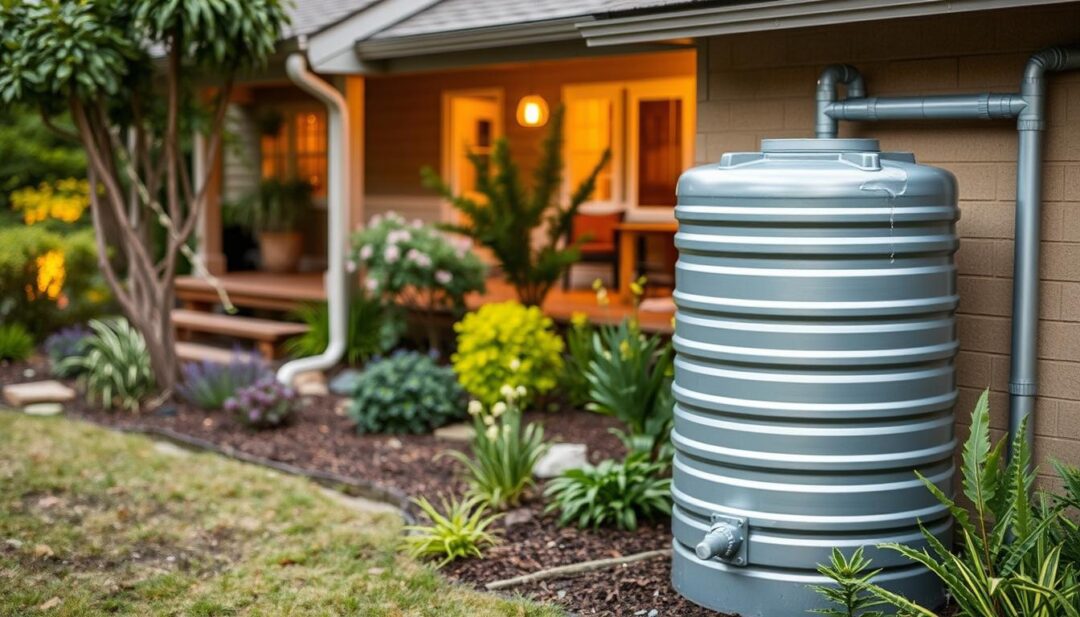
Installing Gutters and Downspouts Effectively
Gutters and downspouts are essential for directing rain from your roof into a storage system. Proper installation ensures maximum water flow and minimizes waste. Position gutters slightly sloped to allow water to move smoothly toward the downspouts.
Downspouts should connect directly to your storage container or tank. Use a pipe to extend the downspout if needed. This setup prevents overflow and keeps your system efficient.
Choosing the Right Rain Barrels or Containers
Selecting the right rain barrel or container is crucial. Look for durable materials like plastic or metal that can withstand weather conditions. Ensure the container has a secure lid to keep debris and pests out.
For larger needs, consider a tank with a higher capacity. Repurposing items like drums or trash cans can also work for smaller setups. Always check for leaks before use.
Enhancing Your System for Daily Use
To make your system more functional, add filters to improve water quality. A simple mesh screen can remove leaves and debris. For irrigation, attach a hose or drip line to your barrel or tank.
Regular maintenance ensures long-term performance. Clean gutters and downspouts periodically to prevent clogs. Inspect your storage containers for cracks or damage.
With these enhancements, your rainwater harvesting system can provide water for gardening, cleaning, and other household needs. It’s a practical way to save resources and reduce your environmental impact.
10 Simple and Creative Ways to Collect Water at Home
Combining old-school techniques with innovative ideas can transform how you manage water at home. Traditional methods like wells and surface harvesting have stood the test of time. However, modern DIY projects offer flexibility and cost savings.
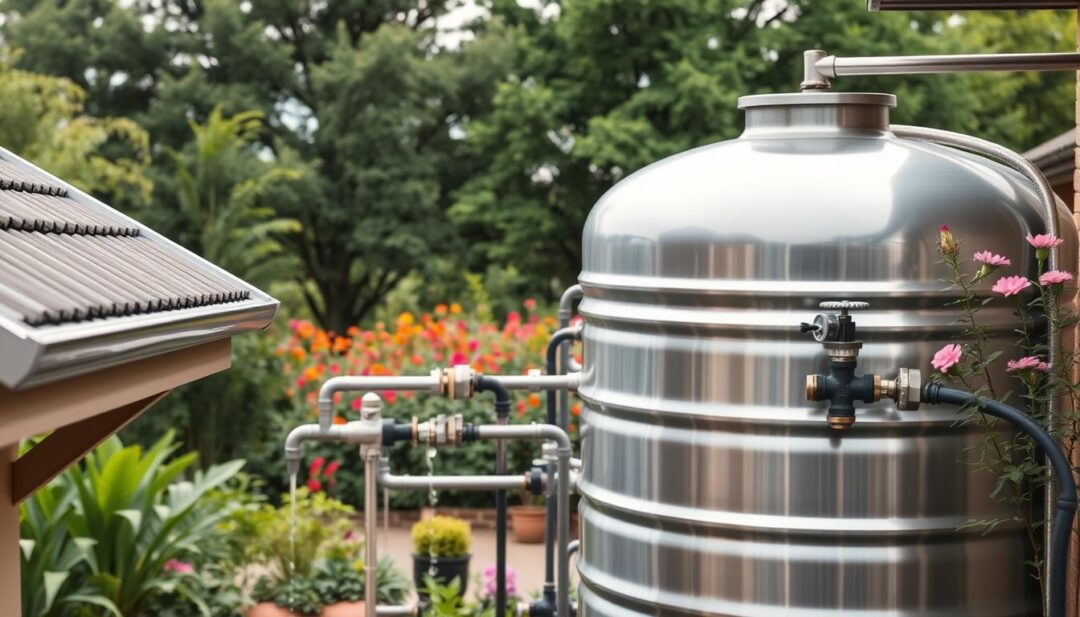
For example, installing a rain barrel is a simple yet effective way to start collecting rainwater. On the other hand, building a rain garden or greywater system requires more effort but provides long-term benefits. Each option has its pros and cons.
Cost-Effective Projects for Every Home
DIY projects can be tailored to fit any budget or skill level. Repurposing items like barrels or trash cans into collection systems is both affordable and eco-friendly. These projects not only save money but also promote sustainability.
Here’s a quick comparison of traditional and DIY methods:
| Method | Cost | Ease of Installation | Maintenance |
|---|---|---|---|
| Rain Barrels | Low | Easy | Minimal |
| Rain Gardens | Moderate | Moderate | Regular |
| Greywater Systems | High | Complex | Frequent |
As the table shows, each option has unique advantages. Rain barrels are ideal for beginners, while greywater systems suit those with more experience. Consider your space and local weather when choosing a method.
“The best way to predict the future is to create it.”
Simple modifications can turn everyday items into efficient water collection tools. For instance, attaching a filter to a barrel improves water quality. These small changes can make a big difference.
By exploring creative solutions, you can save money and reduce your environmental impact. Even inexpensive projects can contribute to a sustainable future. Start small, and you’ll see the benefits of collecting rainwater in no time.
Advanced Collection Methods for Gardens and Landscapes
Advanced water collection methods can transform gardens and landscapes into sustainable ecosystems. These techniques not only maximize water storage but also enhance the beauty and functionality of outdoor spaces. Whether you have a small backyard or a sprawling property, these solutions can make a significant difference.
Using Large Water Tanks and Bladder Tanks
Large water tanks are ideal for properties with high water needs. These tanks can store thousands of gallons, ensuring a steady supply for irrigation and other uses. Bladder tanks, which are flexible and space-efficient, are another excellent option for maximizing storage.
Installing a tank requires careful planning. Choose a location that allows easy access for maintenance and connects seamlessly to your garden or landscape irrigation system. Proper placement ensures efficient water distribution and minimizes waste.
Creating Rain Gardens and Installing Green Roofs
Rain gardens are designed to capture and filter runoff naturally. By incorporating native plants, these gardens enhance water absorption and add aesthetic value to your landscape. They are particularly effective in areas prone to heavy rainfall.
Green roofs take sustainability to the next level. These roofs are covered with vegetation, which helps insulate your home and reduce energy costs. They also collect rainwater, reducing reliance on municipal supplies. Green roofs are a long-term investment in both your property and the environment.
By integrating these advanced methods, you can create a self-sustaining garden or landscape. These systems not only conserve water but also contribute to a healthier environment. Start small, and gradually expand your setup to meet your needs.
Creative Ideas Beyond the Roof
Exploring innovative water collection methods can unlock new opportunities for sustainability. While roof-based systems are effective, there are other ways to harness water from your property. These unconventional techniques can complement traditional methods and maximize your water-saving efforts.
Capturing Runoff, Surface Water, and Condensation
One of the simplest ways to collect water is by capturing runoff from your lawn or driveway. Use a bucket or repurposed trash container to intercept water flowing downhill. This method is especially useful during heavy rains.
Natural depressions in your ground can also serve as collection areas. Redirect water into these low spots using small trenches or channels. This approach is ideal for irrigation or filling storage containers.
Condensation is another overlooked source. Place containers under outdoor pipes or air conditioning units to collect moisture. This water can be used for plants or cleaning.
Effective drainage is key to maximizing water retention. Ensure your collection area is free of debris and slopes gently toward your storage system. This setup prevents overflow and keeps your system efficient.
These creative ideas require minimal infrastructure and are cost-effective. By thinking beyond the roof, you can make the most of every drop of water on your property.
Conclusion
Taking steps to conserve water at home is both practical and impactful. From installing gutters and downspouts to using rain barrels, these methods are easy to implement. Combining traditional and modern techniques ensures efficient water collection.
Advanced systems like rain gardens and green roofs enhance sustainability. They not only save water but also beautify your home. Proper planning and creativity can make these systems work for any person or property.
Adopting these strategies reduces reliance on municipal supplies and lowers utility bills. It’s a win for both your wallet and the environment. Start small, and you’ll see the benefits of rainwater harvesting in no time.
Take action today. Whether it’s a simple barrel or a complex system, every drop counts. Protect this precious resource and make a difference in your home and community.
Frequently Asked Questions
Why is water conservation important at home?
Water conservation helps reduce strain on local water supplies, lowers utility bills, and supports sustainable living. Collecting rainwater is an eco-friendly way to supplement your water needs.
What are the basic components of a rainwater harvesting system?
A basic system includes gutters, downspouts, a rain barrel or storage tank, and a filtration system. These components work together to collect and store rainwater efficiently.
How do I choose the right rain barrel for my home?
Consider size, material, and durability. Plastic barrels are lightweight and affordable, while larger tanks are ideal for bigger gardens or landscapes. Ensure it has a secure lid to prevent debris and pests.
Can I use rainwater for drinking?
Rainwater is generally safe for irrigation, cleaning, and laundry. For drinking, it must be properly filtered and treated to remove contaminants.
What are some creative ways to collect water beyond rain barrels?
You can capture runoff with permeable surfaces, create a rain garden, or install a green roof. These methods help manage stormwater while enhancing your landscape.
How do I maintain my rainwater collection system?
Regularly clean gutters, inspect downspouts, and empty barrels to prevent algae growth. Check for leaks and ensure the system is functioning properly before the rainy season.
Are there cost-effective options for water collection?
Yes! Repurpose old trash cans or buckets as storage containers. DIY projects like building a rain garden or using a simple pipe system can be budget-friendly.
What is a rain garden, and how does it help?
A rain garden is a landscaped area designed to absorb runoff. It reduces erosion, filters pollutants, and replenishes groundwater, making it a sustainable addition to your yard.
Can I use rainwater for my lawn or car washing?
Absolutely! Rainwater is perfect for irrigation and cleaning tasks like washing your car. It’s free, soft, and reduces the need for treated tap water.
How does a green roof contribute to water collection?
Green roofs absorb rainwater, reduce runoff, and provide insulation. They’re an innovative way to manage water while improving your home’s energy efficiency.


